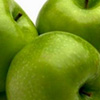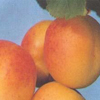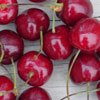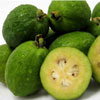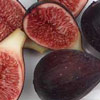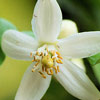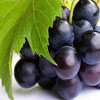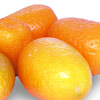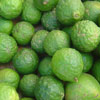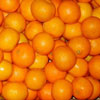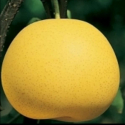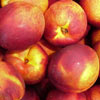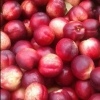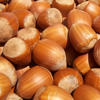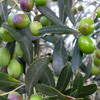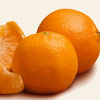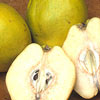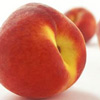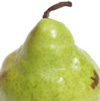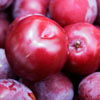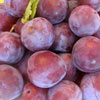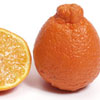Fruit Trees for sale in New Zealand
Wairere Nursery has one the best selections of Fruit and Nut trees for the home orchard in New Zealand. Apples, Apricots, Feijoas, Figs, Hazelnuts, Walnuts, Lemons, Mandarins, Oranges, Olives, Nectarines, Peaches, Pears, Persimmons and Plums plus much, much more. Wairere stock both modern and heritage varieties along with the top favourites, Apple Royal Gala, Peach Golden Queen, Plum Black Doris, Pear Conference and Mandarin Satsuma. There are dwarf selections for the smaller section along with a range suitable for growing in containers or to espalier against a wall. Grapes, Berries and Brambles are also available. Top quality plants reflect the many years of experience the Wairere team have at selecting the best. If you wish, purchase online and have them carefully packed and freighted to your door or visit us at our Waikato Nursery, 826 Gordonton Road, R D 1, Hamilton and look forward to bumper crops of juicy, nutritious fruit packed full of vitamins all things good for you.
The pre-historic Apple has endured to become one of the most popular fruits in the world today. Depending on your belief system apples have been known to the human race since time began. Just ask Adam! Carbonized remains of apples have been found dating back to the Stone Age so there is no doubt that the Apple has always been part of our food chain. With over 10,000 different known varieties there is bound to be an aple to suit your gardening style and your palate.
Apples make up 18% of all horticultural exports from New Zealand generating an income of $300 million plus. How about "them apples"? Apples are rich in fibre, calcium, potassium and Vitamin C. The Vitamin C content is found just under the skin so it is best to munch with the skin on. So you can see why an Apple day helps keep the Doctor away.
Check out our Pollinator Guide here
Apples are members of the Rose family and require similar growing conditions. They are happiest planted in a sunny, sheltered position. They can tolerate quite a range of soil types but they demand good drainage. It is also very important not let the soil around your Apple tree dry out completely during the summer. Some Apples are self-fertile (or partially so) which simply means they can produce fruit without a pollination partner i.e. a companion Apple tree. However, most Apple cultivars need a companion tree close by to provide cross pollination to ensure fruiting.
In urban areas pollination of Apple trees is seldom a problem as the popularity of Apples ensures there will be plenty of pollination partners in your neighbourhood that the bees will easily find. As a general rule good cross-pollination will occur if you plant Apple varieties that flower and fruit around the same time. If you are short on space you could choose a double grafted cultivar (2 varieties on 1 tree) and that will take care of any worries about the Apple's sex life! Most Apple trees in New Zealand are grown on semi-dwarf root stock which means they will seldom reach more than 5m. You can maintain your trees at lower height by careful pruning in the winter. These days you can also choose Apple varieties that are narrow and upright in habit (look for the name "Ballerina") and these can easily be grown in a container. Refer to our main fruit tree page for further planting and pruning information.
Most apples mature between February and March. The best way to test fruit maturity is by sampling! Storage should be in a cool dark place or if you prefer surplus Apples can be processed into Apple Sauce or Cider.
Some Apples can be damaged by Codling Moth. This can be controlled organically by placing Pheromone traps in your trees in late spring. The Pheromone entices the Male Codling Moth into the trap. This means he can't mate with the Female and therefore the lifecycle of this Apple pest is interrupted. Check your Apples regularly for signs of other pests and diseases and treat with your preferred method of control remembering not to spray insecticide at blossom time. Good cultivation habits will prevent most pest and disease problems. You can also choose disease resistant cultivars many of which are known as "Heritage" Apples. These varieties have stood the test of time - they often have a unique texture and flavour and are generally known as good doers.
And to finish............How do you make an Apple Turnover? Roll it down a Hill!
Apricots are easy to espalier and look fantastic trained against a brick wall or a wooden fence. Train into the classic 'fan' shape and enjoy the decorative aspect as well as the fruit.
A sunny, sheltered position is best - protected from Spring frosts. During the early stages of the tree's development, water well - and also during long dry periods.
Apricots are one of the few trees that MUST be pruned during summer - as soon as the tree has finished producing fruit. This minimises the chance of infection.
Most varieties are self fertile, but will produce heavier and more regular crops if pollinated by another variety.
Berries are the perfect fruit – not only are they great to eat, versatile in their usage and add fabulous colour to desserts and baked goods, but they are packed with nutrients including good doses of Vitamin C, fibre and antioxidants. They are really easy to grow, occupy only as much space as you are willing to give them, and produce prolific quantities of fabulous fruit. They make jolly jars of jam and cheerful chunks of chutney when you have a bumper crop.
There is a wide range of Berries to choose from, some of which are known as Brambles, due to the fact that they have thorny or spiny canes and branches. Brambles are those tasty, colorful delights of early summer and autumn. The genus Rubus is divided into many species that include raspberries, blackberries, dewberries, loganberries and boysenberries. Berries include strawberries, blueberries and gooseberries.
Berries are often treated as gourmet fruit because they don';t store well. They are easy to grow and are a desirable addition to any home garden. Summer-bearing brambles ripen right after strawberries, creating a succession of fruit crops.
Select a planting site higher than the surrounding area if possible, as this provides essential air circulation and water drainage, reducing disease and insect problems. Strawberries and blueberries can be successfully grown in containers if space is limited.
Pruning is essential for maximum fruit yields. Some gardeners prune their autumn-fruiting raspberries to the ground in early spring, sacrificing the summer crop for the sake of one big bumper autumn crop. Raspberry bushes send up suckering stems that must be cut out immediately with a sharp spade, although the black and purple varieties are a little tidier.
Brambles are adapted to a wide range of soils but do best when planted in well-drained, deep, fertile soil that is high in humus. A pH of 6.0 to 6.5 is preferred. Compared to raspberries, blackberries are more tolerant of heavy soils. Adding organic matter and planting in raised beds can be of help in avoiding diseases.
There are so many mouth-watering recipes that include berries. Here are just a few fabulous ideas: Berry-Yoghurt Ice, Raspberry Nectar, Loganberry Jam, Boysenberry Parfait, Blackberry Cocktail, Chocolate and Blackberry Brownies, Boysenberry Brulee (just dee-licious!), Bramble Crumble (yum!), Raspberry Pavlova and the all-time favourite, Blueberry Muffins.
We have to be honest and say that growing and harvesting Cherries takes a special kind of horticultural hero. It is almost impossible to beat the birds to your delicious crop unless you enclose the tree in some kind of protective covering.
Cherries are hapiest in cool climate areas that have a dry spring and summer. As you can imagine the fruit splits very easily if pelted with heavy rain. Therefore choose your planting position well. It should be a hot and sunny spot, hopefully out of reach of harsh frost and strong wind. The tree itself is not frost tender however heavy frost can damage emerging blossom. Good drainage is essential. Cherries quite like the addition of a little lime if your soil tends to be on the acidic side.
The fruit should mature about 6 weeks after blossom. It is important to keep the tree well watered during this period. The fruit is best picked with the stalks on and consumed as soon as possible after picking - that';s probably not going to present you with a serious problem. The good news is that Cherries are full of "anthocyanins" which are a potent antioxidant. Certainly beats Broccoli in the "good for you" stakes in my opinion.
Cherries don';t need a lot of pruning. There is a definite school of thought that this is better done in summer so the pruning cuts heal quickly and prevent the spread of disease. Cherries can be a little susceptible to bacterial canker and good cultivation methods will certainly help to avoid this but you may have to treat with a spray of Coper Oxychloride every now and then. Let';s hope that with a good horticultural practice (and a little luck) that your life really will be a bowl of cherries!
These sub tropical shrubs actually hail from Brazil and are named after Don da Silva Feijoa a 19th century Brazilian botanist. Due to their popularity in New Zealand we tend to think of them as something uniquely Kiwi. Feijoas are exceptionally easy to grow and very tolerant. However given ideal conditions the fruit will have a better flavour and you will get a more bountiful crop of deliciously fragrant beauties.
Give Feijoas a sunny position in well drained fertile soil. If there is a dry spell of weather when the fruit is developing, make sure you water well. Feijoas don't like heavy frost due to their sub tropical heritage but once established they become surprisingly tolerant. Feijoas will grow near the coast and will tolerate quite a lot of wind especially if grown closely together in a hedge. Some of the new cultivars such as "Marion" tend to be more frost hardy. No need to prune unless you require a particular shape however the removal of some branches allowing good light penetration will assist with fruit development.
The fruit matures in late autumn and will fall naturally from the tree when ready to eat. To avoid fruit damage you can apply a thick layer of mulch at the base of the tree. This will also protect the shallow roots. The fruit will keep well for 3 to 4 weeks if stored in a cool place. High in vitamins and minerals, pest and disease tolerant, Feijoas are definitely worth putting on your "must have" list and if you've got kids (big or little) in your family they will just love them.
Figs have a long, historical and flavorful history! The edible fig is one of the first plants that were cultivated by humans and is probably one of the most eulogised of all fruits. Artists, writers and poets have waxed eloquent about the apearance and the flavour of the fruit – just read D H Lawrence’s somewhat erotic poem about Figs!
Figs have provided sustenance for man for as long as there has been dietary history, and they were the first fruits to be dried and stored by man. There was a fig tree in the Garden of Eden and whether it was the forbidden fruit is debatable, but it is definite that a fig tree provided the first clothing; “...the eyes of both of them were opened, and they knew that they were naked; and they sewed fig leaves together, and made themselves aprons.” It is probably for this reason that fig leaves, or depictions of fig leaves, have long been used to cover the genitals of nude figures in painting and sculpture. So, if you know that you are naked, you know what to do!
Pliny, the Roman writer said, “Figs are restorative. They increase the strength of young people, preserve the elderly in better health and make them look younger with fewer wrinkles.” The bit about the wrinkles alone should be motivation enough to rush out and buy a fig tree or two!
Figs can be eaten fresh or dried, and used in jam-making and baking and there is nothing to touch Fig, Mascarpone and Walnut praline tartlets. Figs provide more soluble and insoluble fiber (both of which are important for good health) than any other common fruit or vegetable. The list of mineral nutrients in figs is impressive. Even if you don’t care a fig about its nutrition, grow it for its delectability!
The flower is invisible, as it blooms inside the fruit. Figs enjoy being pruned - and can therefore be controlled in size – as they produce their fruit on new wood. The tree itself is highly decorative with its light grey bark, ballooning habit and large shapely leaves; a tree well worth finding a sunny spot for.
The grapefruit is a sub-tropical citrus tree grown for its fruit which was originally named the "forbidden fruit" of Barbados – in fact it is still regarded as one of the “Seven wonders of Barbados”. It is unclear as to whether this is due to the abundance of the fruit on the tree – hence its name Grapefruit, so-called because it looks like a big bunch of golden grapes on the tree – or whether it is due to the phenomenal properties of the content of the fruit.
The two major culinary uses for Grapefruit are Juice and Marmalade. Both are fantastic with a bit of sugar. But the Ruby Red grapefruits are superb for simply cutting open and eating. Great flavour – sweeter than the yellow-skinned cousin - but still astringent. And best when chilled.
Grapefruit is an excellent source of many of the nutrients and phytochemicals necessary for a healthy diet. It is a good source of vitamin C, pectin, fibre, and the pink and red hues contain the beneficial antioxidant lycopene. Studies have shown grapefruit helps lower cholesterol and there is evidence that the seeds have low levels of antioxidant properties. Grapefruit forms a core part of the "grapefruit diet", the theory being that the fruit';;s low glycaemic index is able to help the body's metabolism burn fat.
And we all like to watch our weight! But beautiful bods aside, it seems to me that the Gorgeous Grapefruit was planted on the classic Kiwi quarter acre even before the Luscious Lemon. There has to be a good reason for our Ancestors to have placed such importance on the planting of this tree. However, with the subdivision craze having resulted in the choping up of land, not every section will now (but should) have its own grapefruit tree. Go get one!
“Red, Red Wine, Stay close to me……” Can you just hear UB 40 crooning that old favorite tune with its reggae beat? How many other songs have been written about the fermentation of this revered fruit?
The history of grapes is as old as the history of mankind. There is evidence that as far back as Ancient Egypt, man has been transforming grapes into wine, one of the world’s finest symbols of romance.
But even before it is transformed into that delicate, fermented beverage, grapes are linked symbolically with love, fertility and virility. The ancient Romans, acknowledged as the first civilization to cultivate grape vines, made both grapes and wine emblems of Bacchus, god of ecstasy (not to mention fertility). Even pre-dating the Romans, in ancient Greece it was a tradition to give clusters to newlyweds in the belief that the grape’s seeds would bless the couple with many children.
Grapes are a natural for the seductor’s arsenal. The sweet jewels are the perfect finger food - and one packed with age-defying anti-oxidants. Grape seed oil also has excellent free radical-fighting effects, used as either cooking or massage oil. There is also evidence that these little fruits of seduction could prove powerful in the fight against cancer.
Grapes have a long and abundant history. While they';ve grown wild since prehistoric times, evidence suggests they were cultivated in Asia as early as 5000 BC. The grape also played a role in numerous biblical stories, being referred to as the "fruit of the vine." Grapes were pictured in hieroglyphics in ancient Egyptian burial tombs.
According to the "Food and Agriculture Organization" 75,866 square kilometers of the world are dedicated to the cultivation of grapes. Aproximately 71% of world grape production is used for wine, 27% as fresh fruit, and 2% as dried fruit. A portion of grape production goes to producing grape juice to be used as a sweetener for fruits canned "with no added sugar" and "100% natural". The area dedicated to vineyards is increasing by about 2% per year. Here in New Zealand we certainly see (and welcome) this trend. There has been phenomenal growth in the industry from about 7000 hectares of cultivated vineyards in 1997 to more than 23,000 hectares in 2007. The industry standards ensure sustainability and the production of world class fruit of the vine and its resultant wine.
The ideal place for the home gardener to grow a grape vine is over a pergola which covers a deck or patio area. Because the vine is deciduous, it will lose all its leaves in the winter months, allowing the sun to shine through, whilst it will provide dense shade and fruit for the plucking in the summer months. The rapid growth of the vine requires that it is pruned hard each year, preferably after the winter frosts are over. Visit Wairere and choose from one of our excellent selection.
Kumquats are frequently eaten raw. As the rind is sweet and the juicy centre is sour, the raw fruit is usually consumed either whole, to savour the contrast, or only the rind is eaten. The fruit is considered ripe when it reaches a yellowish-orange stage, and has just shed the last tint of green.
Culinary uses include: candying and kumquat preserves, marmalade, and jelly. Kumquats apear more commonly today as a martini garnish, replacing the classic olive (I wonder what Mr. 007 Bond would have to say about that?). They can also be sliced and added to salads. A liqueur can be made by macerating kumquats in vodka or other clear spirits. Delicious! Kumquats are a popular addition to both hot and iced tea. And how about creating a conversation point by placing a bowl of kumquats on your table at the next lunch party you host.
Lemons do need some pampering at first however, and for just a little effort you will be well rewarded. First you need to know that Lemons are gross feeders. What that means is that like me they enjoy their tucker. Unlike me they only have to be fed twice a year, early spring and early autumn. It is best to use a specially formulated Citrus food which is readily available. I also throw a few sheep pellets around the base of my Lemon trees a few times a year.
The second most important requirement for Lemons or any Citrus is that they must be well watered during dry periods. If you are growing in a container then regular watering (every day in summer) is essential. If you don't water regularly then the young fruit will drop off the tree and the older maturing fruit will dry out and become pithy. Thirdly Lemons must be protected from harsh frost when young. Do this by placing a cover around or over the plant when frosts are forecast. Remember to remove the cover in the morning. If you live in a particularly frosty area leave planting any new trees until late spring. Lemons will do their best in a fertile well drained soil.
You can prune Lemons at any time but really the most convenient time is when you are picking the fruit. Never pull the fruit off, always cut off with a sharp pair of secateurs. Cut back as far as you like to a new growth joint or shoot. Lemons flower in spring and the flowers are bi-sexual and therefore self pollinating, saving them all those complicated relationship problems! The perfume is quite strong and will waft sensuously through garden. Lemons do have the odd pest and disease problem but these are usually easily dealt with. Keeping them hapy and healthy is the best remedy and they in turn will do the same for you.
The lime is rarely consumed on its own. Limes are second only to lemons in terms of importance as a flavouring agent for foods, drinks and other, non-edible, products for home and industrial use. The use of lime juice and lime zest to enhance the flavour of rice, potatoes, salads, and cooked vegetables will cut down the amount of salt you need to use, and eliminate the need for adding fat. Lime juice is excellent in marinades, beverages, salad dressings, guacamole, seafood and barbecue sauces, fish and meat stews, sorbets, jams, and let us not forget Key Lime pie.
The lime is also famous for the role it played in 18th century English sailors becoming known as "limeys." Scurvy was the plague of sailors until it was discovered that when they received a ration of one lime a day it stoped. While they knew that it worked they did not know why, and it wasn't until scientists discovered vitamin C that they figured out that it was the vitamin contained in the fruit that gave the protection. Limes should be firm, glossy, and bright in colour. For the juiciest limes, choose those that are heavy for their size with thin skins. Avoid fruit that is hard or spongy and soft, although it should have some give.
Limes are easy to grow, like most citrus trees, and they flourish best in full sun and will also do well if tended, cared for and fed, in a large container.
The blossoms of the mandarin are heavily perfumed and can be quite intoxicating in the evening.The fruit is oblate, rather than spherical, and roughly resembles a small pumpkin in shape. Mandarins are usually eaten plain, or in fruit salads and kids love to lie under the tree and eat them by the dozen. This is certainly because the fruit is easily peeled with the fingers, and can be spilt into even segments without spilling juice. This makes it convenient to eat, as one doesn't require utensils to peel or cut the fruit.
In the simplest hybridizations, a cross between tangerine and orange is called a tangor, while a cross between tangerine and grapefruit is called a tangelo. Hybrids that include tangerine, grapefruit and orange are simply called citrus hybrids. Because all tangerines are mandarins but not all mandarins are tangerines, mandarins are commonly separated into four groups: Mediterranean – originating in the Mediterranean Basin – probably Italy, King – originating in Vietnam, Satsuma – from Japan, and Tangerines – which came from Algeria.
The Mandarin tree is more tolerant to drought than the fruit. Mandarins are grown in tropical and subtropical areas worldwide, although best color and quality usually occurs under subtropical conditions. As a group, mandarins are among the most cold-hardy of citrus fruits, being second only to kumquats. Most mandarin trees are more erect than other kinds of citrus trees and many exhibit a drooping habit because of rather long, willowy branches.
The wood is somewhat more brittle than other citrus and limb breakage is common under heavy fruit loads unless some sort of suport is provided. When planting, be aware that some trees will have been container-grown in a soilless medium--which makes the trees rather difficult to establish without special care. At planting, use a gentle stream of water from the garden hose to wash an inch or so of the medium from all around the root ball, thereby exposing the peripheral roots. Thus, the outer roots are placed in contact with the soil of the planting site and growth commences almost immediately.
For more specific nut variety information click below.
Almonds (Prunus dulcis) The Almond is believed to have originated in the Mediterranean region which has hot dry summers and cool winters, which is what the tree likes in order to bear well. They need a well-drained, salt-free soil, and the young trees must be protected from frost. They are not self-fertile, so two varieties that flower at the same time are needed to produce a crop. Check out our Pollination Guide here.
Whilst the almond is most often eaten on its own, raw or roasted, it is used in many dishes. It, along with other nuts, is often sprinkled over sundaes and other ice cream based dishes. It is also used in making baklava and nougat. There is also almond butter, a spread similar to peanut butter, popular with peanut allergy sufferers and for its less salty taste. The sweet almond oil is used in massage – mmm, just the thought of being smothered in sweet oil and pummeled…..
Chestnut (Castanea sativa)Also originating in the Mediterranean region, the Sweet chestnut has been cultivated for its nuts since the dawn of time. It is a spreading tree, needs a lot of space and as it matures, the branches really thicken out. The trees are also prized for their fine timber and for their exquisite autumn foliage. Chestnuts like a cool climate and are easily grown in full sun or part shade in deep, fertile soil. They enjoy a slightly acid soil. Hot dry summers suit them well as long as ample soil moisture is available in winter and spring.
The nuts can be eaten candied and are often sold under the French name marrons glacés, or boiled or – most delicious of all – roasted on an open flame. Another important use of chestnuts is that they can be ground into flour, which can then be used to prepare bread, cakes and pasta. Chestnut-based recipes and preparations are making a comeback in Italian cuisine, as part of the trend toward rediscovery of traditional dishes.
Chile Nut (Gevuina avellana) This Chilean native nut tree is a beautiful evergreen specimen that grows into a large tree and produces erect spikes of spidery, white, cream or greenish flowers followed by slightly elongated small fruit – or nuts - that are bluish-black and taste similar to hazelnuts. This is quite a fussy specimen to grow, requiring a mild climate with cool, humid summers. Grow in a sheltered spot with deep, rich, well-drained soil that never dries out.
Hazelnut (Corylus avellana) The Common Hazelnut is a deciduous tree that occurs on many continents and is fairly easy to grow provided that soil moisture is adequate and ample space is allowed. They need full sun or part shade and fertile, well-drained, chalky soil. Cooler, moist summers also assist in fruit production.
Hazelnuts are extensively used in confectionery to make praline and also used in combination with chocolate for chocolate truffles and products such as Nutella. In Austria, and especially in Vienna, hazelnut paste is an important ingredient in the world famous tortes (such as Viennese Hazelnut torte) which are made there. Vodka-based Hazelnut liqueurs, such as Frangelico, are very popular – but beware – they are delicious and deceptively mask the alcohol content. Hazelnut is popular as a coffee flavoring, especially in the form of Hazelnut latte.
Walnut (Juglans regia) The scientific name for Juglans is from the Latin jovis glans, "Jupiters acorn", and regia, "royal". Its common name, Persian walnut, indicates its origins in Persia although it is widely distributed around the world. Cool-climate trees, Walnuts prefer a sunny position. Although quite frost hardy, young plants and the new spring growth are susceptible to frost damage. Deep rich alluvial soil of a light loamy texture suits them best and they need regular water.
The slow growing tree can reach 15m and spread to 9m so it does require a space of its own. The fallen leaves are toxic and should not be put on the compost. Walnuts are light-demanding species that benefit from protection from wind. They are also very hardy against drought.When grown for their nuts, care must be taken to select cultivars that are compatible for pollination purposes. Although some cultivars are marketed as "self fertile" they will generally fruit better with a different pollination partner.
Walnuts are very beneficial to health as they contain properties that can reduce the damaging effects of unhealthy fats on blood vessels and keep cholesterol under control. Eat a handful after a fatty meal!The English put the nuts in vinegar and call them "pickled walnuts", the Armenians preserve them in sugar syrup and eat them whole, the Italians flavour their liqueurs with walnuts and, in Georgia, walnuts are ground, along with other ingredients, to make walnut sauce. And what do you do with your nuts?
Here's the good oil. The ancient and venerable European Olive (Olea) tree has certainly put roots down in NZ and adapted extremely well to our Kiwi lifestyle. The Olive is not only a highly regarded feature tree in New Zealand landscape schemes, it is now becoming an important horticulture crop for both the fruits and high quality Virgin Olive oil.
Both Sir George Grey and Logan Campbell were responsible for planting large numbers of Olive trees in New Zealand from about 1860 onwards. Their legacy can still be seen in Cornwall Park, Auckland, where some of these original trees continue to grow and produce Olives. These days Olives for oil production are grown just about everywhere in New Zealand with Hawkes Bay, Martinborough and Marlborough being 3 of the key production areas.
As a garden plant Olives do well where the winter is cool, and not too wet, and the summers are long and hot. I think I would thrive in those conditions as well! Olives will grow in poor soils but will do better in fertile open loam that is free draining yet does not dry out completely especially when the fruits are forming. Once established the Olive tree will become more drought tolerant. Olives have a shallow root system and therefore are better located away from very strong Southerly winds. Some wind is acceptable, even desirable as Olives are wind pollinated. Many varieties are self fertile but as you know we always recommend a partner for the best results. A side dressing of Gypsum from time to time will also help add alkalinity to the soil and mimic the trees horticultural origins. Warning- don';t overfeed with Nitrogen rich fertilizer.
Olives look their best when group planted and their beautiful shimmering blue grey foliage combines well with just about any other colour in the garden. Olives can also be used as dramatic container plants around pools and patios. No matter if you want to grow Olives as a culinary delight or a visual delight they have proved that they certainly do "oilright" right here in little old Godzone.
There is a whole world of interesting facts – such as that the orange is actually a type of Berry - relating to the Common Orange that are fascinating. For example, did you know that:
Orange juice is one of the commodities traded on the New York Board of Trade.
Sweet orange oil, a by-product of the juice industry is produced by pressing the peel. It is used as a flavoring in food and drink and for its fragrance in perfume and aromatherapy.
It is an efficient cleaning agent which is promoted as being environmentally friendly. Its smell is considered more pleasant by some than those of other cleaning agents.
The orange blossom is traditionally associated with good fortune, and was popular in bridal bouquets and head wreaths for weddings for some time.
The petals of orange blossom can also be made into a delicately citrus-scented version of rosewater.
In Spain, fallen blossoms are dried and then used to make tea.
Orange blossom honey is produced by putting beehives in the citrus groves during bloom, which also pollinates seeded citrus varieties. Orange blossom honey is highly prized, and tastes much like orange.
All parts of the orange are used to make marmalade: the pith and pips are separated, and typically placed in a muslin bag where they are boiled in the juice (and sliced peel) to extract their pectin, aiding the setting process.
Orange peel is used by gardeners as a slug repellent.
Wow! All that from one fruit. Every garden should grow one.
Check back soon for more information!
Peaches like moist, well drained soil with some protection from strong wind for the spring blossom. Keep the ground around the base of the trees free of weeds and feed young trees with good quality organic compost. Peaches should be located in a position with good air flow. This allows cold air to flow away on frosty nights and keeps the area cool in summer. Peaches are best planted in early winter, as this allows time for the roots to establish and be able to sustain the new spring growth. For optimum growth, peach trees require a constant suply of water. This should be increased shortly before the harvest. The best tasting fruit is produced when the peach is watered throughout the season. Drip irrigation is ideal, at least one driper per tree.
Most of the peach trees we stock are named cultivars grafted onto a suitable rootstock. It is possible to grow a tree from either a peach or nectarine seed, but the fruit quality of the resulting tree will be very unpredictable. Peaches have a high nutrient requirement, needing more nitrogen than most other fruit trees. A mulch of poultry manure in autumn soon after the harvest will benefit the tree.
If the leaves of the peach are yellow or small, the tree needs more nitrogen. Blood meal and bone meal are suitable fertilizers - and don’t forget lashings of luscious compost.Tips for good fruit: If the full amount of peaches remain on the tree, they will be under-sized and lacking in flavour. The fruit should be thinned when they have reached 2 cm in diameter, usually about 2 months after flowering. Fresh fruit is best consumed on the day of picking, as they do not keep well. They are best eaten when the fruit is slightly soft, having an aroma, and heated by the sun.
Cultivated peaches are divided into "freestone" and "clingstone" cultivars, depending on whether the flesh sticks to the stone or not; both kinds can have either white or yellow flesh. Peaches with white flesh typically are very sweet with little acidity, while yellow-fleshed peaches typically have an acidic tang coupled with sweetness, though this also varies greatly. Both colours often have some red on their skin. Apart from eating them sun-ripened off the tree, or slightly chilled with fresh cream, there are some fabulous recipes that use peaches, such as smoothies, fruit salads, the great Peach Island Sunset drink, peach and plum gratin, fruit kebabs, peach-teriyaki grilled chicken, buttermilk and peach muffins and many, many more mouthwatering munchies.
With their modest moisture requirements, pears also suit coastal conditions and thrive in heavy, sandy loams with good drainage in a sunny position. They are ideal for cool-temperate climates. They must be cross-pollinated to produce fruit. Prune to remove damaged branches and to improve the shape of the tree in late winter or early spring. Plentiful sunlight is a key factor for maximum fruit production. Choose an area of the garden in full or nearly full sun. Morning sunshine is particularly important for early drying of dew, thereby reducing the incidence of disease.
Check out our Pollinator Guide here
Plant pear trees in the winter or early spring whilst they are dormant. Soak the roots in water for 30 minutes to an hour before planting to ensure that the root ball is thoroughly moist. The pear tree lends itself well to Espalier and nowadays one can purchase a tree that has three varieties grafted onto it – imagine that – three in one!
The genus is thought to have originated in present-day western China in the foothills of the Tian Shan Mountains, and to have spread to the east and west along mountain chains, evolving into a diverse group of over 20 widely recognized primary species. The cultivation of the pear extends to the remotest antiquity. Traces of it have been found in the Swiss lake-dwellings; it is mentioned in the oldest Greek writings, and was cultivated by the Romans. The word "pear" or its equivalent occurs in all the Celtic languages. Pears have been cultivated in China for aproximately 3000 years.
Some favorite ways to serve pears include:
• Combine pears with mustard greens, watercress, steamed leeks and walnuts for a delicious salad.
• Serve pears with goat or blue cheese for a delightful dessert.
• Add choped pears, grated ginger and honey to porridge or muesli for a pungently sweet breakfast treat.
• Core pears, and poach in aple juice or wine for a delectable dessert.
The delicious, delectable Plum is probably the easiest of all the stone fruits to grow, with less pest and disease problems and a more tolerant nature than, for example, a Peach or Apricot. In New Zealand the most popular Plums grown are Japanese as these tend to have the big fat fleshy fruit that we all love. We do still grow some European varieties and though they have smaller less attractive fruit they are still worthy of consideration for flavour. There are also hybrids of Japanese and European trees on offer plus double grafted trees. In short, a Plum to suit everyone! Some Plums are self fertile but most are planted with a Pollinator to ensure good fruit production - check out our Pollinator Guide here
Plums love a warm sunny position and fertile deep loam that is free draining. Plums will not tolerate a water logged position. They will do best with a cool winter ensuring a good rest during dormancy. Fruiting starts from December through to about February depending on the variety planted. Warning - you may have to protect your fruit from birds and opossums as they will be looking forward to the crop as much as you are! For pruning tips check out our main Fruit Tree Header.
Plums are divided into three groups--European, Japanese, and native North American--based on their geographic origins. European plums include the familiar blue fruits commonly found which are widely grown in NZ. The tart damson plums, from which jams and jellies are made, belong to this group, as do the firm sweet varieties that are dried to make prunes.
It is believed that the ancient peoples of the Middle East were the first to dry plums to make prunes. Prunes have been prepared for centuries in France, and the prunes from the region around Agen are still considered by many to be the best in the world. Today, orchards in California, which use Agen plums almost exclusively, yield a major share of the world's prunes. Prunes are also produced in some central European and South American countries.
Prunes are a good source of vitamins A and B, are high in fiber, and are rich in iron, calcium, and phosphorus. Their pulp is used as food for infants. Prunes are eaten raw, soaked or stewed alone or with other fruits, and are used in jams and desserts. The pulp, stewed fruit, and juice are packaged commercially. And of course, not only are they highly nutritious - they help to keep us ‘regular’!
All Citrus trees require hot summers and mild winters to thrive. They can stand temperatures down to 5 Deg C with only minor damage to outer shoots. Tangelos do best in a sheltered position that gets plenty of sunlight. And like all citrus trees they prefer well drained soil and lots of water.
While Tangelos do not need fertilizer to produce a healthy crop they are quite nitrogen hungry. So if you want to maximize your crop yield a liberal spreading of a nitrogen rich fertilizer such as chicken manure in the spring and autumn will do the trick.
Tangelos generally do not need to be pruned. However they can be espaliered, with some success. Irrigation does enhance the yield and produce juicier fruit.
Check out our other pages -
Roses for Sale in New Zealand
Camellias for Sale in New Zealand NZ
Fruit Trees for sale in New Zealand
Perrenials for sale in New Zealand
Trees for sale in New Zealand
Plants for sale in New Zealand
Plants for sale Online in New Zealand
Topiary Plants for sale in New Zealand
Plants for sale in New Zealand
Nurseries in Hamilton New Zealand
Hedging Plants for Sale in New Zealand
Hamilton Garden Centres New Zealand
Hamilton Landscaping New Zealand
Native Trees For Sale in New Zealand
Mail Order Plants New Zealand
Mail Order Roses New Zealand
Mail Order Rose Bushes New Zealand
Mail Order Nurseries in New Zealand
Roses for Sale in New Zealand
Roses for Sale in New Zealand
